I've learnt a lot about the environment recently.
The experts at Finder Green are pumping out resource after resource about sustainability, filling my brain with all sorts of knowledge.
I've also learnt that Tasmania is the home of Australian green initiatives, with some incredibly smart people doing some incredibly smart things. For instance: did you know that in one of the many bays that Tasmania has to offer, there is a group of people farming seaweed to save the planet?
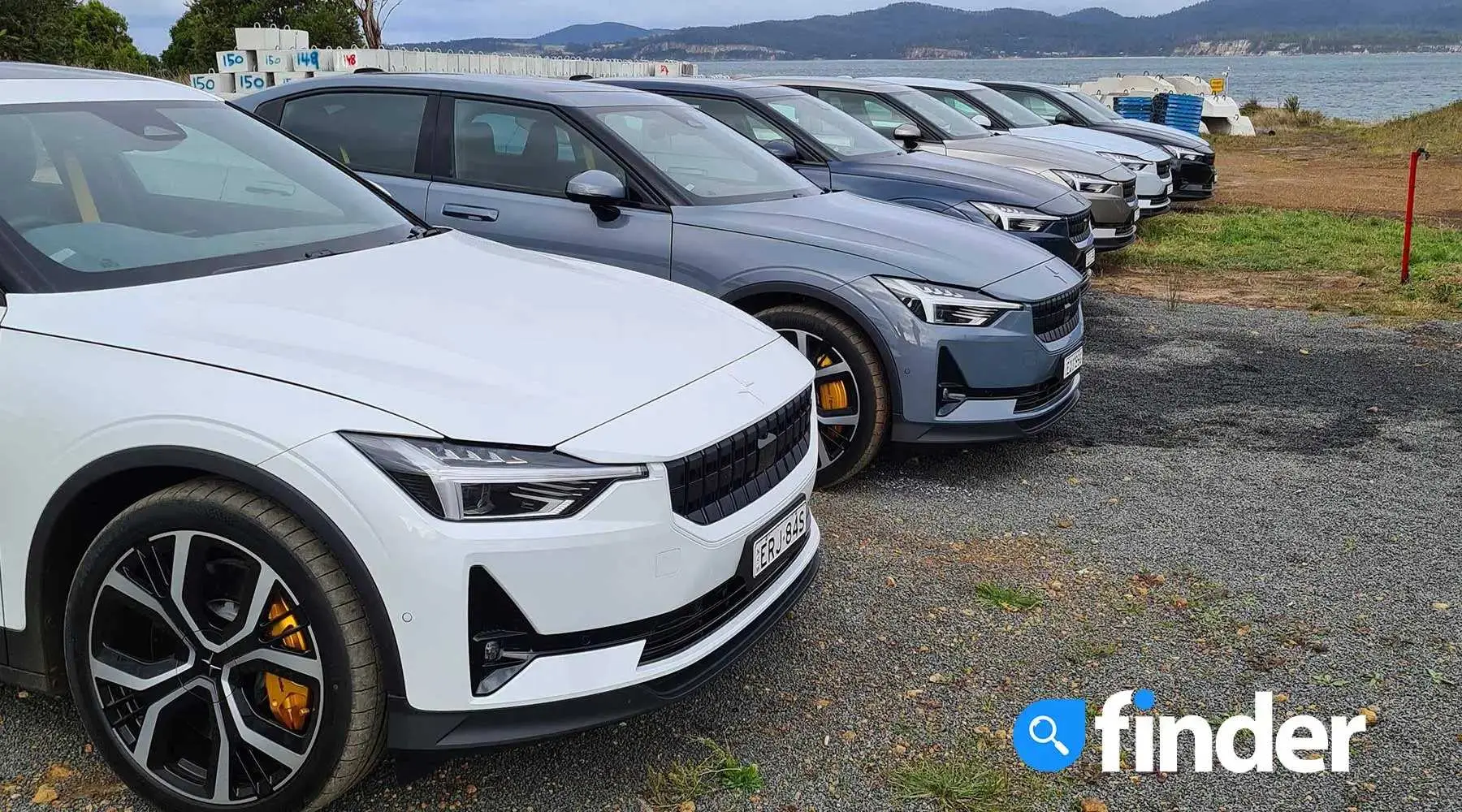
This particular type of seaweed, when fed to cows, reduced their methane production by up to 98% annually. Considering the number of cattle not just in Australia, but globally, something like this is going to have a huge impact. It blew my mind... seaweed?
I also learnt that Tasmania is cold and there is literally nothing that doesn't use the blockchain anymore.
But that's not why I was in Tassie. The goal of my overseas trip to Tasmania was to test drive Polestar's newly updated Polestar 2.
For those that don't know: Polestar isn't exactly a new company, but as a stand-alone brand, it is relatively new. It used to be what AMG is to Mercedes, but for Volvo. It was pumping out tuned-up tyre fryers that made petrol heads grin from ear to ear.
We've since learned that tyre frying, although fun, isn't exactly great for the environment. So as a result, Polestar has changed focus, splitting out to create pure electric motor vehicles (the reasoning may not be completely accurate, but the outcome is the same).
The company started with the Polestar 1, next year will bring the Polestar 3 and smack bang in the middle is its current automobile – the Polestar 2, which has a drive-away price starting at $69,300.
What's so different about this Polestar 2?
One of the arguments against electric motoring is to do with the emissions that are created during the process of making the car. This includes the mining of the materials, manufacturing and (the main one) the coal burned to recharge the vehicle.
As a company, Polestar is strongly committed to reducing the environmental footprint as much as possible for every vehicle it makes. With its latest update, it becomes the most sustainable car the company has ever produced – and not just for the emissions it does or doesn't directly produce.
With this iteration, the company has gone the extra mile by doing the following:
- Refining the aluminium battery casings and changing the wheels to ones made from low-carbon aluminium, both of which are also produced using the power of renewable energy. These battery casings will save 750kgs of CO2e while the wheels will save 600kgs of CO2e per vehicle – a reduction of 1,350kg per car.
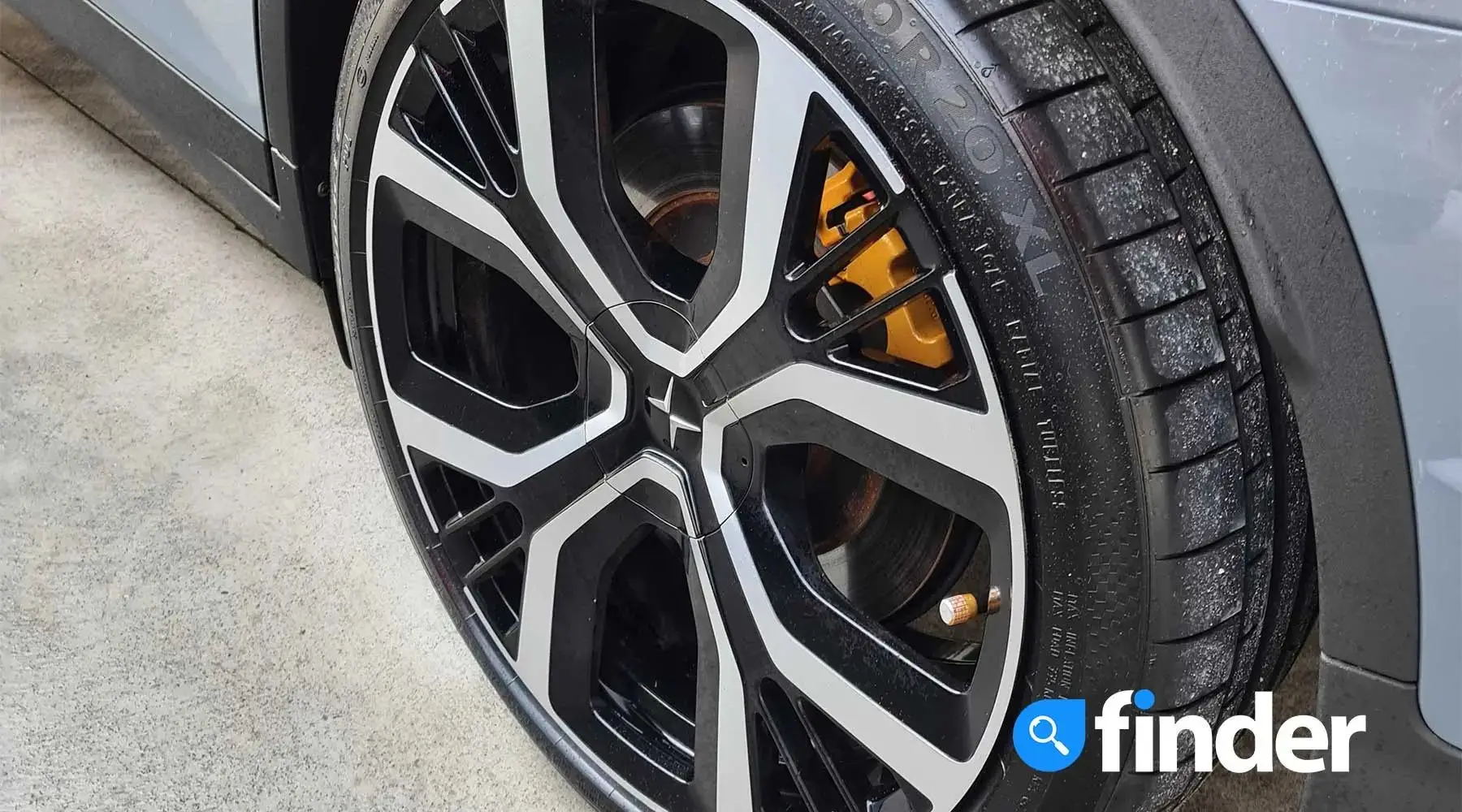
- Further showing how they're looking for sustainability solutions in the automotive industry and outside it too, Polestar has introduced a new interior material. It is recycled, so there is less waste. If you pay to upgrade to a leather interior, the company has done its best to ensure that it's utilising the most sustainable leather. The leather is certified by the UN Food and Agriculture Organisation, is farmed using sustainable practices and the cows themselves live happy lives being grass-fed and free to move about.
Knowing the outcome, that all might sound a bit grim, but it's a move that is going to make a difference in the long run, and if you are sustainably focussed, it is perhaps a question you should be asking of other products you buy.
- A new heat pump has been included in the optional Plus Pack, which reduces the need to use valuable battery capacity to prepare and sustain the cabin climate. It looks to use ambient heat as well as residual thermal energy from the drivetrain to reduce climatisation load by as much as 50%.
It's most effective between 5-15 degrees Celsius, where as much as 10% can be gained in driving range. That means that in this respect, the Polestar 2 and its new heat pump were in their element in Tasmania, where the water was warmer than the air.
Updates via the cloud
Polestar is constantly working, developing and refining and that means that, thanks to over-the-air updates, more significant gains can be deployed at a later date.
There have been some tech updates that you would find in a normal vehicle update too. Android Automotive OS has been upgraded to the latest P2.0 software, giving you access to the latest Google maps you know and love as well as the ever learning, ever advancing Google Assistant, which is able to help you with virtually everything.
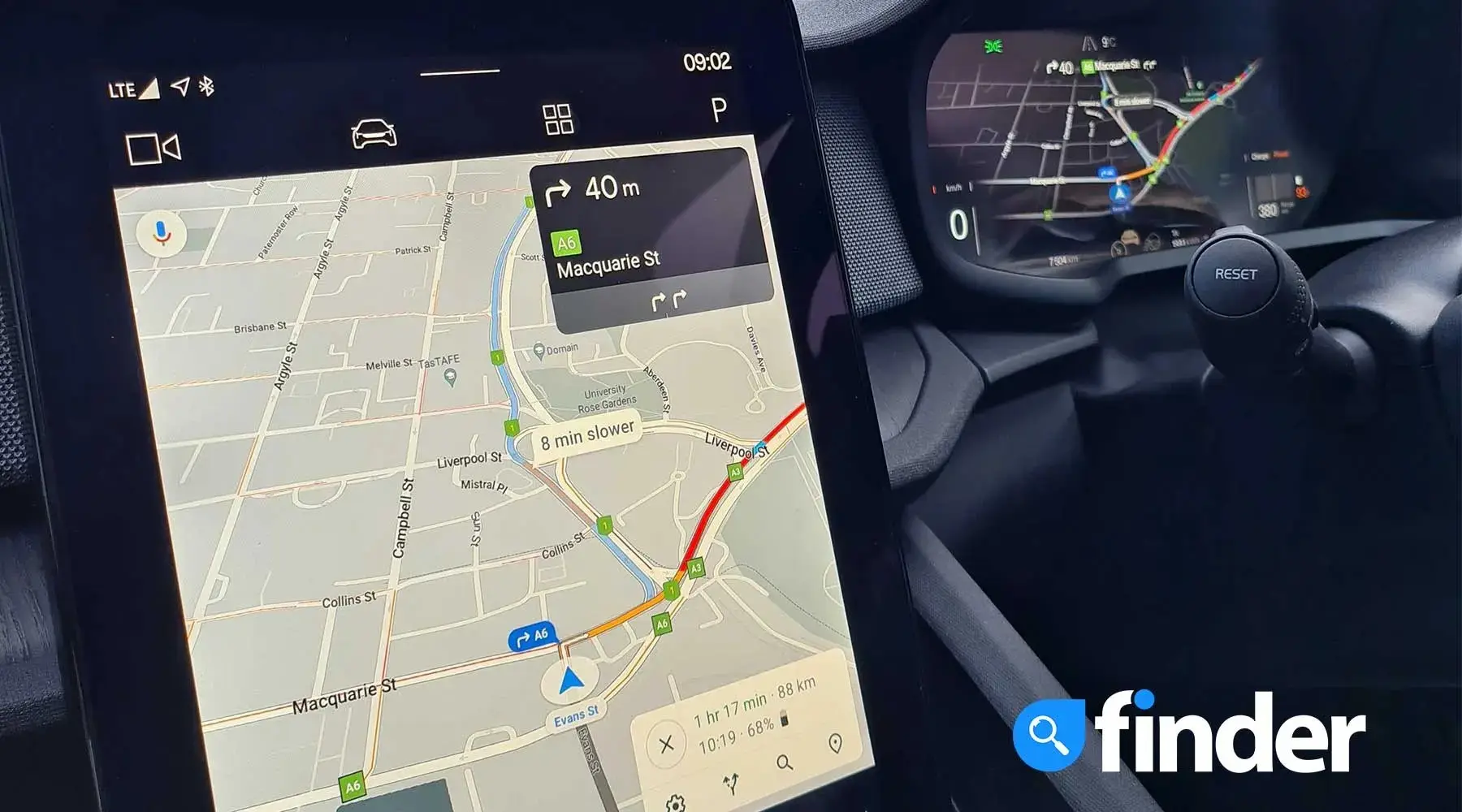
It can even sync up with your connected home to turn the lights on or dim them to get the mood just right for when you get inside. We didn't get to test this though.
Interacting with the system is intuitive and easy. It is arguably one of the better-operating systems fitted in a vehicle at the moment – especially when matched with the 11.15-inch vertical touchscreen.
P2.0 was upgraded over the air, so owners of older vehicles should still be able to benefit from this upgraded software.
The benefit of over-the-air updates is that you will always have the latest software. You don't have to drive to a dealership and have them load it, nor do you just have to miss out. The incredible part though is that you will essentially be able to purchase extra software, like the performance software upgrade the Polestar made available for dual-motor vehicles.
Where a standard dual-motor produces 300kW and 660Nm, by purchasing the update, you bump up the power to 350kW and 680Nm. It's like buying a Porsche Carrera, taking it home, and deciding you'd like to wake up to a 911 Turbo – but the electric version.
Tech nerds will further be licking their lips because you can also track the origin of materials like Mica, used in the Polestar 2, on that chain of blocks that everyone is talking about.
Just like the blockchain, of course, there is an app. There is an app for everything – but this one has some nifty features that don't take your time away and instead make things a lot more comfortable and less stressful.
Have you ever left the car and wondered if you locked it? You can check, lock and unlock it through the app. Find yourself under-dressed on a freezing cold morning in Tasmania and about to drive to a seaweed farm? Get the air conditioning going before you get to the car.
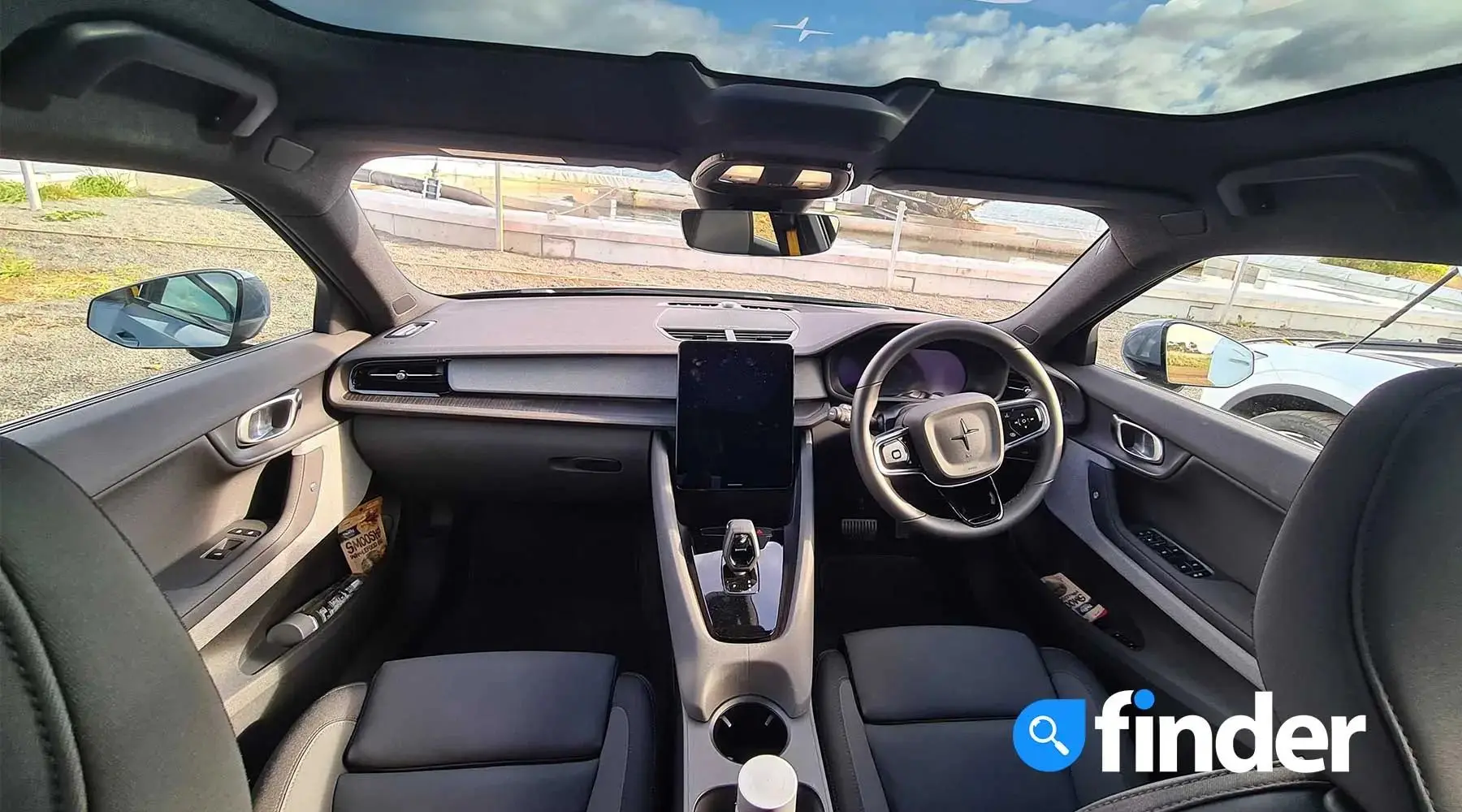
How was the Polestar 2 to drive?
During our drive in Tassie, we were in a dual-motor with the performance pack, among others, optioned, which comes out to $103,764.76 on the road.
So first things first. It's blisteringly quick – with a zero to 100km/h time of 4.7 seconds. I can tell you that it feels every bit as quick as it sounds – driving you back into your recycled seats and hauling until things are rushing at you quickly.
It is sparked into motion through a 78Kwh battery and dual-motor drivetrain that produces 300kw and 660Nm, which with the performance pack, goes to the ground through grippy Continental SportContact 6 tyres.
As mentioned earlier, if you're a complete lunatic, those numbers can be upped with a software update.
Big chunky Brembo breaks, again courtesy of the performance pack, were fitted to our vehicle to allow your organs to rearrange themselves quickly when you're done sprinting to the horizon.
The battery in our performance model, with its new low-carbon aluminium casing, has enough charge to cover 480km of road – depending on the driving style. That means you would need just over 3 full charges to do a complete lap of Tasmania. Our seat time in the Polestar 2 dual-motor was somewhat limited during our time in Tassie, so we will reserve judgment on the range until we get to spend a bit longer with the vehicle.
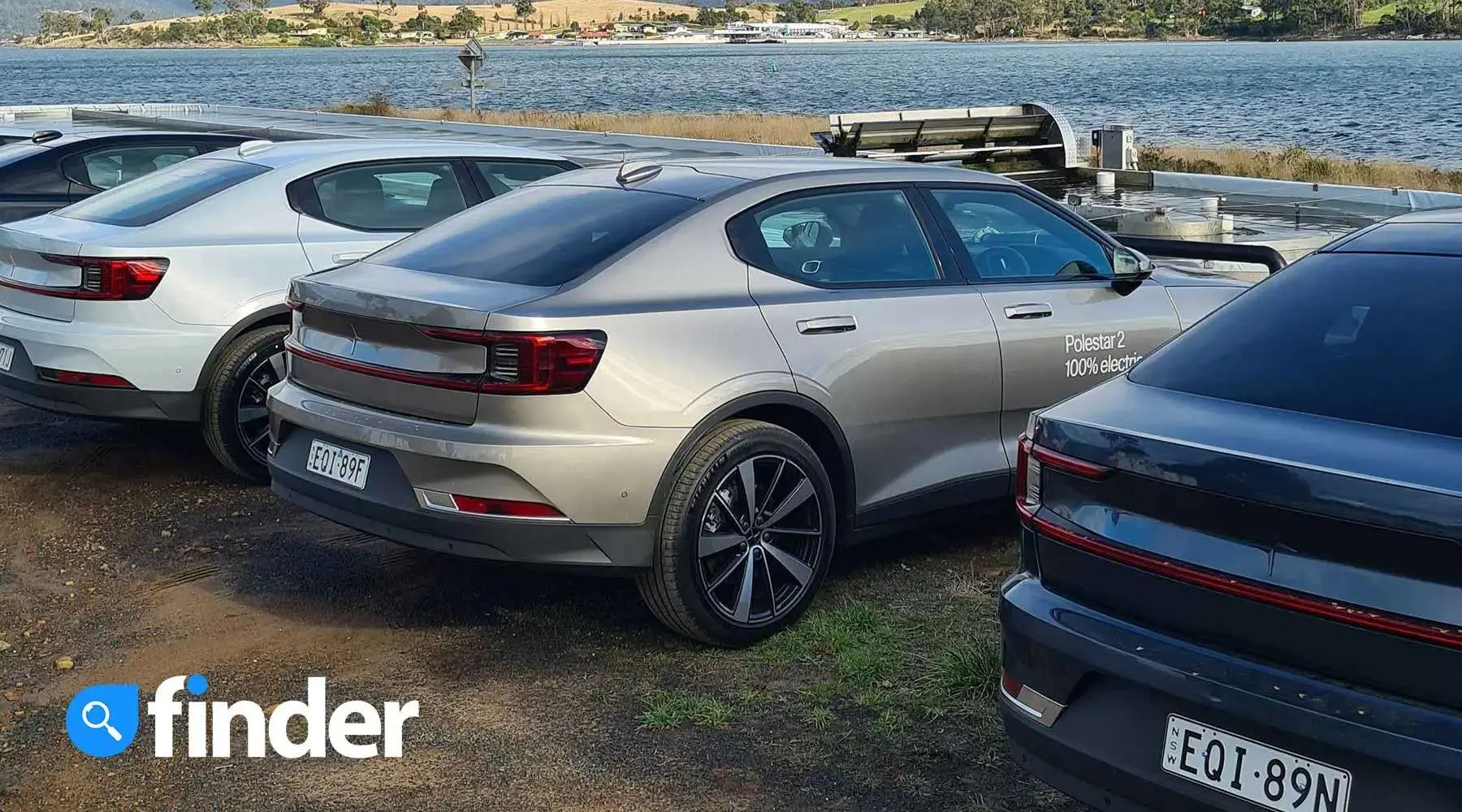
Varying levels of regenerative braking mean you can move between 1-pedal and 2-pedal driving. After switching between each option and after hoping Polestar had a generator with them, I found myself using the medium setting which builds some charge back but isn't as aggressive as you lift off the accelerator.
The dual-motor Polestar has a low centre of gravity, like most electric vehicles, which means it can be quite fun and balanced when getting stuck into the many bends and winding roads that Tassie has to offer. Again, you'll want to play with the brake settings before getting a corner and going full yeet.
The verdict on the Polestar 2
It is clear to me after my brief stint in Tasmania that Polestar is a company looking to lead the charge not just in electric motoring, but in sustainability across the board. It is reducing the carbon footprint not just of its vehicles, but ensuring it is only using suppliers with sustainable processes – a move which, if other manufacturers follow, will force other suppliers to change too.
That is to say, the company's impact will be felt outside the automotive industry.
The latest iteration of the Polestar 2 is a step forward. A reduced footprint, more recycled materials and even should you want leather, you know that it is coming from a sustainable and ethical place. It is designed handsomely with the functional minimalism you have come to expect from Swedish brands and that also means that it is well put together.
We're going to hold out on a final verdict from behind the wheel until we have a bit longer to drive, but as you can tell from the above, we were happily impressed by the dual-motor Polestar 2.
To help you save time when looking for your next car, our car reviews combine multiple reviews into one. You might also be surprised to see what you can save by comparing car loans and car insurance while you're here.
Disclosure: Alex Jeffs travelled to Hobart as a guest of Polestar.
More guides on Finder Shopping
-
Hyundai Ioniq 5 N Review
The future’s electric – and it wants to burn rubber
-
2025 Genesis G70 Review
It's faster than a BMW 3 Series, more unique than a Mercedes C-Class and loaded with features that make it feel every bit as premium.
-
Volkswagen Golf Mk8.5: More tech, more power, more excuses to upgrade?
The VW Golf is back - and it's got more of everything.
-
Sharper, smarter and better value: The 2025 Skoda Octavia RS lands in Australia
Skoda refines its family-friendly performance car with more features, more power and a competitive price.
-
2024 Peugeot E-Expert Van Review
Peugeot have made a van that whispers while it works.
-
2024 Toyota GR Corolla review
Toyota gave a Corolla muscles and a megaphone and it’s glorious.
-
2024 Jeep Wrangler Review
Born for the trail, adapted for the tarmac
-
SUV reviews
Let us assist you in picking your next SUV.
-
Best small cars
There are dozens of different makes and models to choose from and then about five different trim levels on average, per carmaker. This guide will help you cut through the sales banter.
-
Electric Car Reviews 2025
Which electric car should you buy in 2021? Find out with our complete EV guide.
